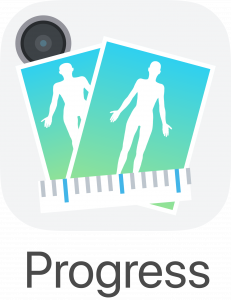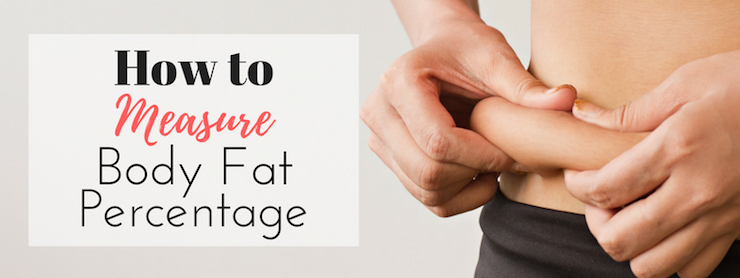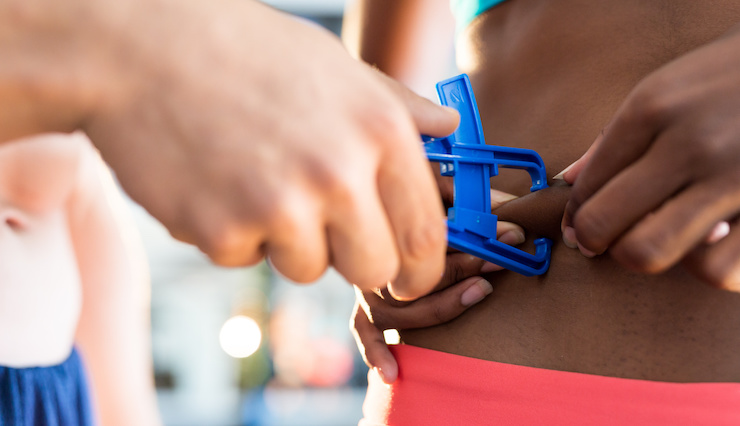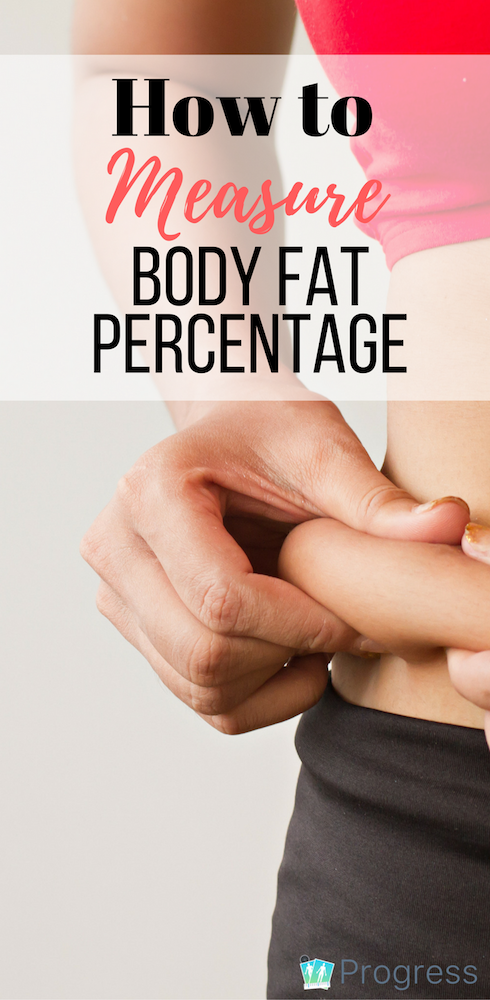
How To Measure Body Fat Percentage

It’s smart to calculate body fat percentage as part of a weight loss tracking routine. After all, when most of us say we want to ‘lose weight’, what we actually mean is: we want to lose fat. And as the average set of bathroom scales can’t differentiate between fat, water and muscle, how will we truly know if we’re on the right path unless we break things down a little?
While body fat percentage is a great metric to track as part of a whole, be aware that the most accessible ways to measure body fat come with a relatively significant margin of error, so it’s best to focus on taking consistent, easily replicable measurements in order to note a trend, rather than getting hung up on the actual figure itself.
Here’s a rundown of the options, starting with the cheapest to the most expensive.
US Navy Method
US Navy recruiters have used the same formula for years. This complex equation uses your height, weight, waist and neck measurements – plus hip measurements if you’re female – to calculate your body fat. I’m not even going to include the formula here because, well, I don’t really understand it, but fortunately there are online calculators to do it all for you, and the Progress app can calculate it automatically for you – win!

Skinfold Calipers
These calipers might look like an instrument of torture but they’re actually one of the most popular tools for measuring body fat. They’re pretty inexpensive too.
The idea is that you take a skinfold measurement and then check the millimeter reading against a chart like this one from Accu-Measure – be sure to scroll to the bottom of their page because it lists some pretty handy tips, like always taking readings from the right side of the body, and never taking readings straight after a workout.
Some experts recommend taking multiple measurements at specific points and then calculating the average, but beware – you may need to ask someone else to help you because some of the measurements are in super hard-to-reach places, like below the shoulder blade.
Whether you’re taking one measurement or many, the process of taking a reading is quite straightforward: Just pull the fat away from your muscles and keep hold of it as you pinch with the caliper. Wait 2 seconds for everything to settle, then record the figure.
Start Tracking
These Accu-Measure Fitness 3000 calipers are good quality – we have a pair at home.
Once you’ve taken your readings, hop over to these sites to determine your body fat percentage:
Body fat calculator – this site lists the 4 different methods for taking multiple caliper measurements and calculates the figure for you online
Body fat percentage measurement chart – once you have your millimeter reading, check here to find your body fat percentage
Special Body Composition Scales
Some electronic bathroom scales now include body fat calculations as part of the package. While this is undoubtedly one of the easiest methods of tracking fat loss, the quality of the data varies considerably with the type of scale you use.
These types of electronic scales rely on bioelectrical impedance analysis to gauge body fat, which means a small electrical current is sent through the body. The results are calculated based on how fast the current moves. The problem here is that hydration levels can affect the readings, so it’s best to try to replicate the same conditions each time your step on the scales – the best time is after you’ve woken up but before breakfast.
Start Tracking
There are tons of scales on the market that offer body fat readings or break down body composition, but many have a wallet-shrivelling price tag attached too.
NOTE: If you use wearables or apps to monitor exercise, calories, steps etc, it might be worthwhile looking at scales designed to pair with them as they can provide some nice time-saving integrations.
We went for the Withings Body+ Body Composition Smart Scale – it goes a little further to break down body composition than most and syncs with Apple Health (which means it automatically syncs with Progress too!).
There’s bound to be a set of scales to suit your needs and budget – just be sure to read the reviews first.
Hydrostatic Underwater Weighing
This is basically water displacement. First, you’re weighed on dry land, then you’re submerged and weighed again after expelling all the air from your lungs. The process is repeated three times.
Because fat weighs less than muscle, the difference between your weight in and out of water is indicative of how much of your body composition is fat. When you average out the results and run it through a formula, you get your percentage.
Though it rates highly for accuracy, it doesn’t appear to be the most practical or readily available method – only a few universities and even fewer businesses offer this type of measurement.
Start Tracking
Try these websites for locations across the US:
The BOD POD
The Bod Pod uses air displacement to calculate body mass, volume and density – and it only takes 3 minutes.
At around $50 a pop the costs could add up quickly for regular trackers, but this is probably the best option for those who want to know exact figures. What’s more, you get an in-depth report that even details the optimal volume of calories you should be eating per day. If you use the information wisely it could end up being pretty good value.
Start tracking
Check your local universities, or take a look at this site, which lists BOD POD locations around the world: COSMED
DEXA Scanning
DEXA (dual-energy x-ray absorptiometry) gives exact figures on body fat, muscle and bone density, even breaking it down to the composition of each limb. All you have to do is lie on an x-ray table for around 8 minutes.
However, as its primary purpose is to measure bone density, some people are finding that DEXA providers will only give out the bone density results – body fat won’t even be read – so it’s worth checking with your local provider before you book, especially as it costs upwards of $100 per session.
Start Tracking
I’ve found the best way to find them is to simply Google ‘DEXA scans near me’
What’s a healthy body fat percentage?
Once you have your results, use the chart below to get a rough idea of where you are.
My advice? Take a note and then move on – the important thing is to keep moving your body, keep eating lots of lean protein and veggies, and to track body fat as part of a wider set of metrics. It’s only part of the picture.
Now you know how to track body fat percentage, why not take a look at our weight loss tracking guide to find out the other three metrics we recommend monitoring for a thorough 360-degree view of weight loss progress?

*We sometimes use affiliate links in our posts. If you click through and make a purchase, we may receive a commission at no additional cost to you. Rest assured, we only promote products we personally use or can recommend without hesitation.
Recent Posts
Achieve your weight-loss goals with an intuitive app that transforms your data into a visual overview of your progress, helping you to stay motivated and on track.